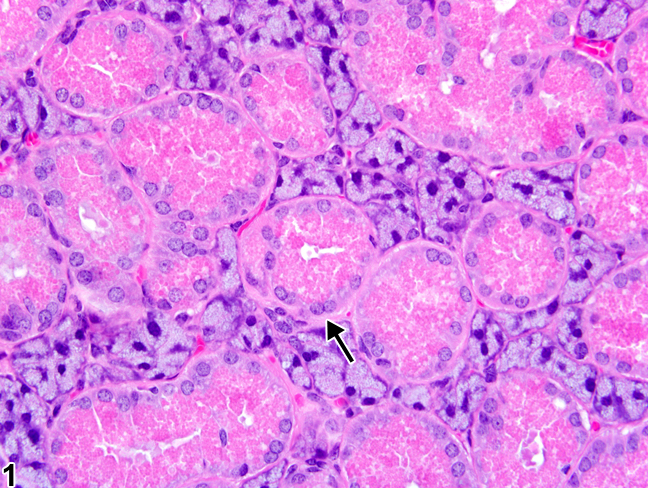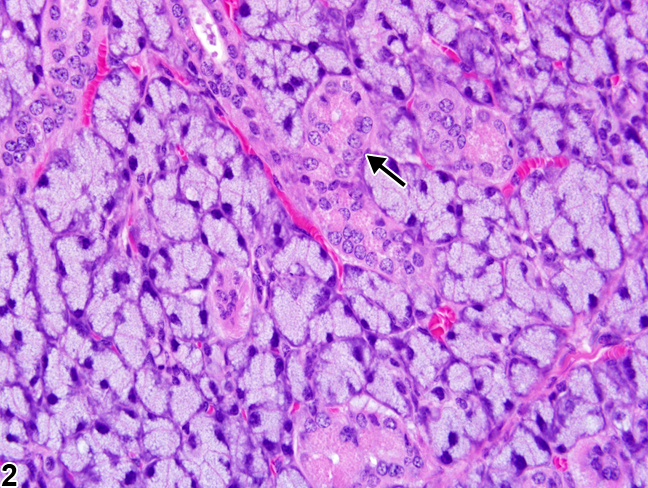Alimentary System
Salivary Gland
Narrative
The submandibular salivary gland of the rodent normally has a sexual dimorphism, which becomes apparent at 7 weeks of age in the rat and 20 days of age in the mouse. In the mature male, the convoluted (granular) ducts constitute a larger percentage of volume of the gland, have more eosinophilic secretory granules, are longer, and are lined by taller epithelium than in females. These cells are hormone dependent and testosoterone sensitive, which may account for the morphologic variations in this gland. This normal variance between the males and females is not recorded and not mentioned in the narrative. However, the amount of secretory product in the cytoplasm of glands and ducts can also vary, often as the result of changes in hormone levels secondary to chemicals administered. If ducts or glands have increased secretory product, such as seen in the submandibular gland in female mice given chemicals that result in increased circulating androgen levels, then this change is diagnosed as "cytoplasmic alteration." If the ducts or glands have less secretory product than normally expected, then the change is diagnosed as "secretory depletion."

Figure 1. Sexual dimorphism in the rodent salivary gland: normal male with increased amount of eosinophilic granules in the convoluted (granular) ducts (arrow) compared with a normal female (see Figure 2).

Figure 2. Sexual dimorphism in the rodent salivary gland: normal female with decreased amount of eosinophilic granules in the convoluted (granular) ducts (arrow) compared with a normal male (see Figure 1).

